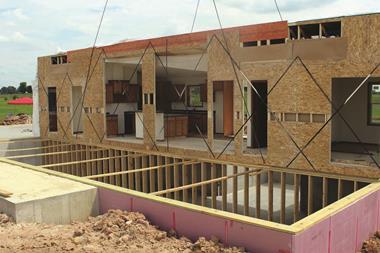We will hopefully begin to see a level of stability return to the UK this year. Geopolitical tensions, lasting impacts from the pandemic and Brexit, and interest rates, which are still relatively high compared with the record-breaking low rates of years gone by, have all had an impact on consumer confidence and demand. But optimism is beginning to emerge; let us hope that is reflected across the entire market.

The UK rate of inflation has started to fall marginally and Bank of England governor Andrew Bailey signalled there is no immediate need for further increases to the bank rate, easing pressure on consumers a little. The beginning of recovery should bode well for real estate and pricing.
Each sector of the commercial real estate market is feeling the impact of economic headwinds differently. Life sciences and purpose-built student accommodation (PBSA), for instance, continue to buoy the market with steady growth. While new listings for PBSA are beginning to drop given the cyclical nature of university lettings, another increase will come over the summer when students begin assessing their accommodation options.
The outlook is even better for the UK’s build-to-rent (BTR) sector, which accounts for 7% of all new-build homes. The sector‘s value as a whole has risen 60% from £35bn in 2019 to £56bn in 2022, and is expected to reach £102bn by 2028, according to Knight Frank. But its survey and a recent report from Savills point to BTR as the most in-demand sector.
For prime logistics assets, yields have gone up around 1.25%, but from a very low baseline, driven by a demand and supply imbalance. For prime office spaces it’s a similar story, with yields going up by around 1%. Even residential has probably seen a 10%, or higher, move from its peak.
The real estate market will continue to evolve to retain demand. This will look different for each sector. People-led spaces, such as offices, student housing or retail, are adapting to incorporate changing attitudes. Stakeholders want buildings that consider ESG factors, such as being carbon neutral, having a healthy air flow, or having the ability to integrate smart tech and cooperative spaces.
On the other hand, old and tired buildings will become obsolete. As set out in the Energy Efficiency (Private Rented Property) (England and Wales) Regulations 2015, commercial buildings that do not have an Energy Performance Certificate (EPC) rating of ‘E’ or above will not able to be traded or leased after the 1 April 2023 deadline. This will increase to ‘C’ in 2027 and ‘B’ in 2030.
The logistics sector has been faring well, due in part to the fundamental lifestyle changes ushered in by the pandemic. Yields are now rising; this could be a cause for concern. Pricing may be declining but only from a very high peak achieved in the past 24 months, and the very best logistics properties should continue to attract demand from occupiers and investors.
While high interest rates and yields are tempering demand in some industries, these highs are partly a reflection of the lows we have become used to over the recent past, rather than a signal of a crisis now.
Frantic reporting of monthly rate changes and prices are out of place in real estate; property is a long-term investment. Most investors’ long-term goals will ride out external factors or short-term fluctuations.
It won’t be immediate, as economic instability continues across the globe, but in the long-term, we could be anticipating stable longer-term UK interest rates, settling at around 2.5% or 3%.
Property that has been well let and adapts to the changing requirements of stakeholders will find itself in favour, yields will once again decline at these rates and values will recover. I have no doubt the market will once again prove its strength.
John Slade is chairman of real estate advisory at Kroll
































No comments yet